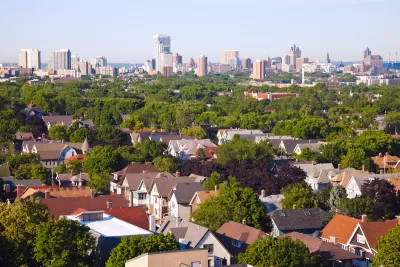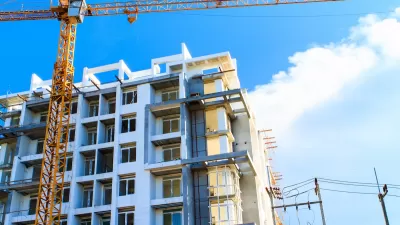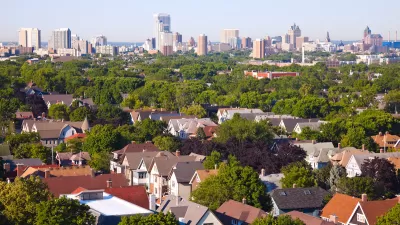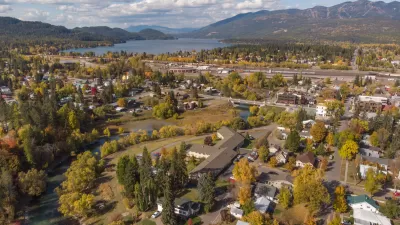The ‘Growing MKE’ plan calls for allowing ADUs, reducing barriers to new construction, and expanding the types of housing available in the city’s residential areas.

A proposal dubbed ‘Growing MKE’ would expand the types of housing that can be built in Milwaukee and streamline the permitting process for residential development, reports Jeramey Jannene in Urban Milwaukee.
The proposal, created by the Department of City Development (DCD), anticipates that the city’s population will grow from roughly 600,000 to one million and follows other cities that are using zoning reform to stem the housing affordability crisis and improve mobility and sustainability.
As Jannene explains, “A key component of the plan calls for expanding the number and types of buildings that can be constructed without legislative approval, instead allowing code-conforming projects to advance through what is commonly called ‘by right’ development.” This would include accessory dwelling units (ADUs), duplexes and triplexes, and other higher-density buildings in certain corridors.
“Growing MKE does not call for any changes to the zoning map, which governs how individual parcels can be developed, but instead calls for modifying components of the zoning code that regulate how density limits are calculated and what requires discretionary approvals,” Jannene adds. The proposal calls for other changes such as eliminating parking minimums along transit routes and limiting the need for hearings when approved projects make “minor modifications.”
The plan will undergo review by the Common Council’s Zoning, Neighborhoods & Development Committee and later go before the full council.
FULL STORY: Changes To Milwaukee’s Zoning Code Would Encourage More Development

Trump Administration Could Effectively End Housing Voucher Program
Federal officials are eyeing major cuts to the Section 8 program that helps millions of low-income households pay rent.

Planetizen Federal Action Tracker
A weekly monitor of how Trump’s orders and actions are impacting planners and planning in America.

The 120 Year Old Tiny Home Villages That Sheltered San Francisco’s Earthquake Refugees
More than a century ago, San Francisco mobilized to house thousands of residents displaced by the 1906 earthquake. Could their strategy offer a model for the present?

HSR Reaches Key Settlement in Northern California City
The state’s high-speed rail authority reached an agreement with Millbrae, a key city on the train’s proposed route to San Francisco.

Washington State Legislature Passes Parking Reform Bill
A bill that would limit parking requirements for new developments is headed to the governor’s desk.

Missouri Law Would Ban Protections for Housing Voucher Users
A state law seeks to overturn source-of-income discrimination bans passed by several Missouri cities.
Urban Design for Planners 1: Software Tools
This six-course series explores essential urban design concepts using open source software and equips planners with the tools they need to participate fully in the urban design process.
Planning for Universal Design
Learn the tools for implementing Universal Design in planning regulations.
Ada County Highway District
Clanton & Associates, Inc.
Jessamine County Fiscal Court
Institute for Housing and Urban Development Studies (IHS)
City of Grandview
Harvard GSD Executive Education
Toledo-Lucas County Plan Commissions
Salt Lake City
NYU Wagner Graduate School of Public Service





























